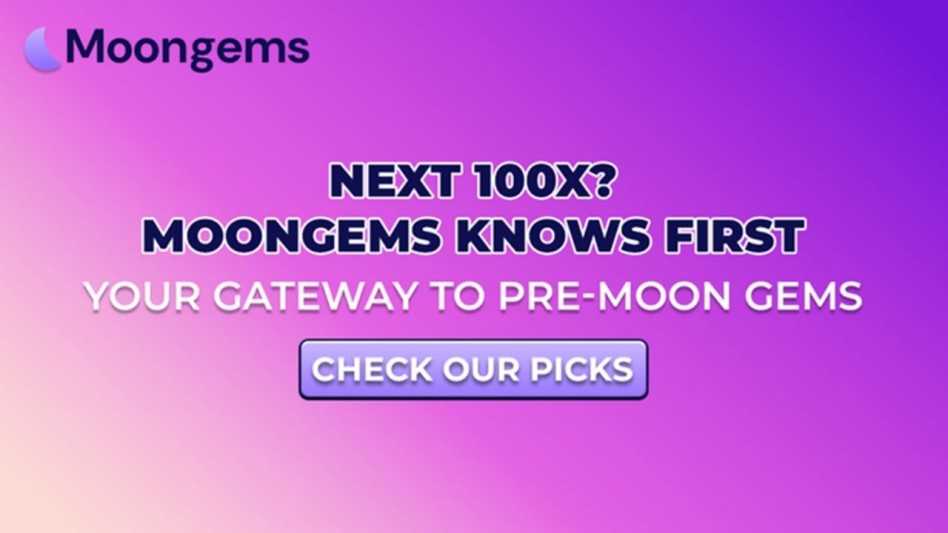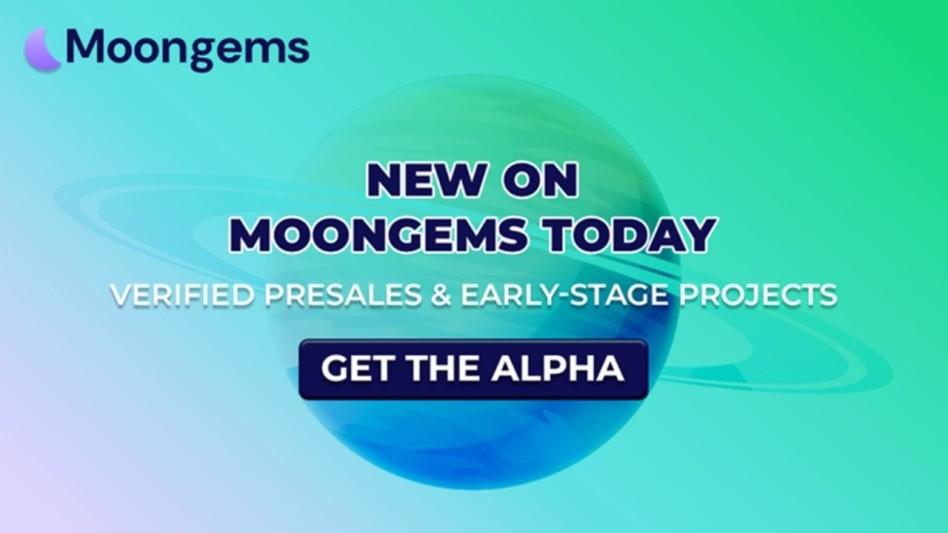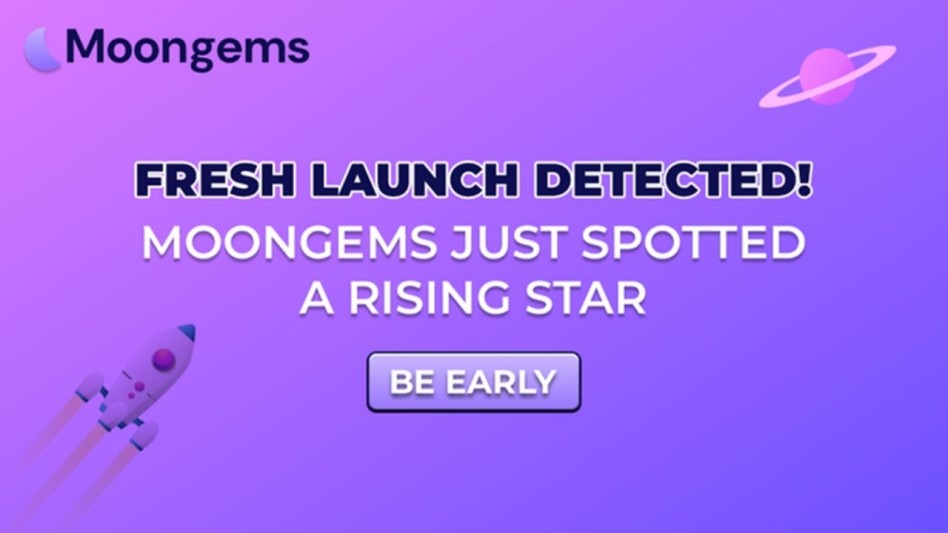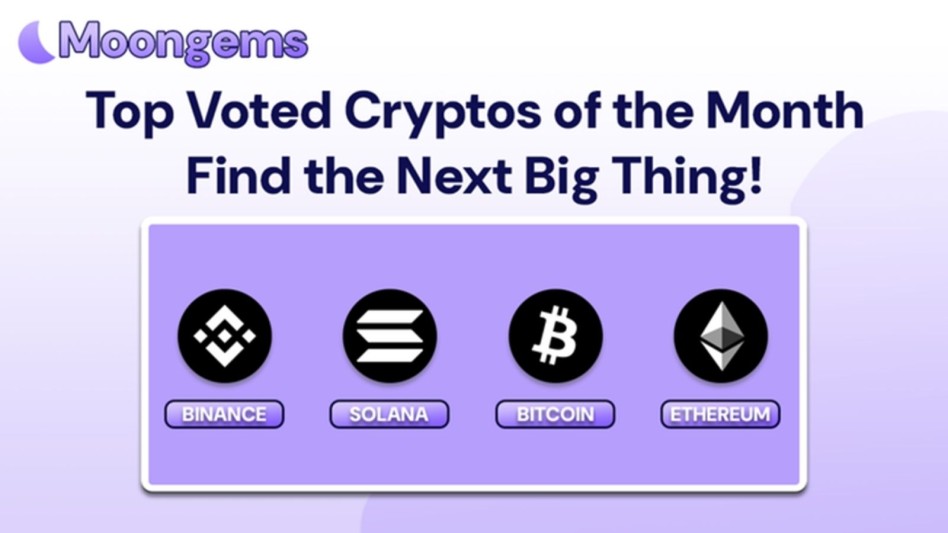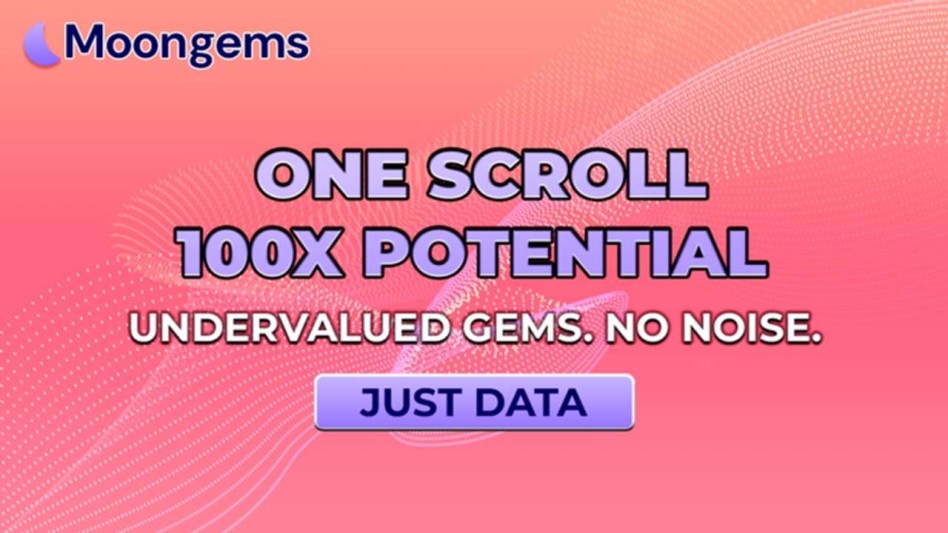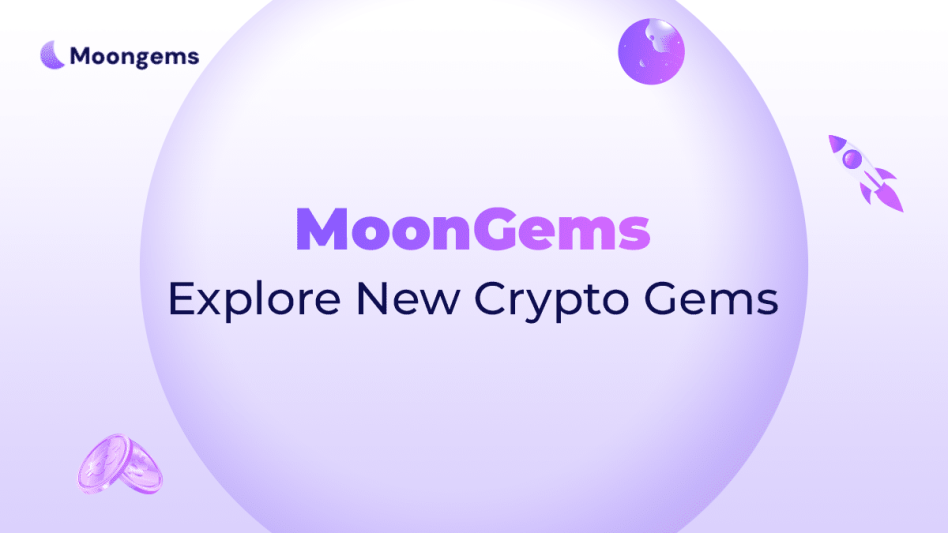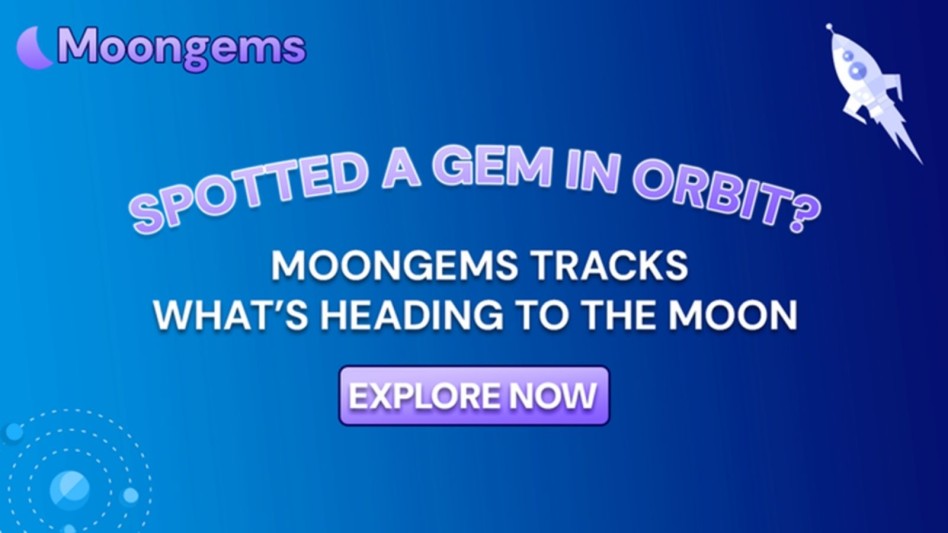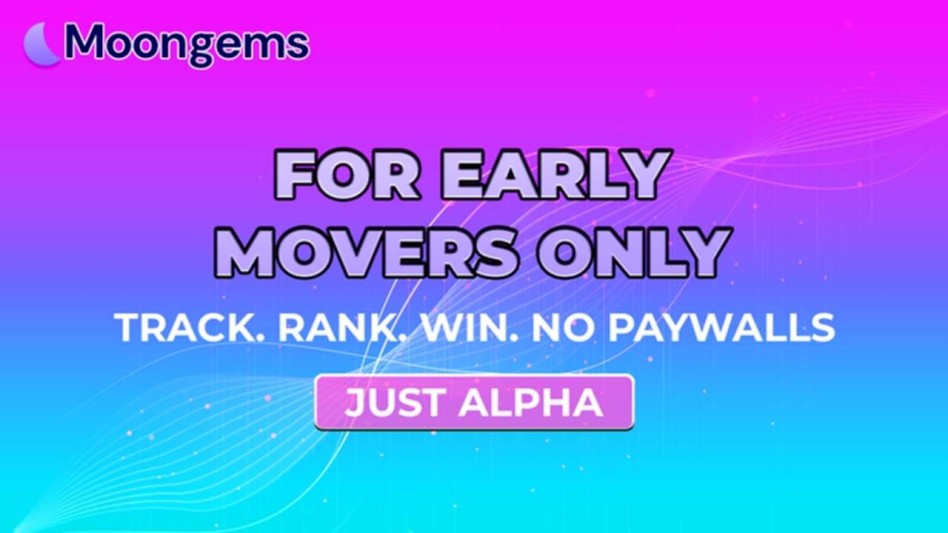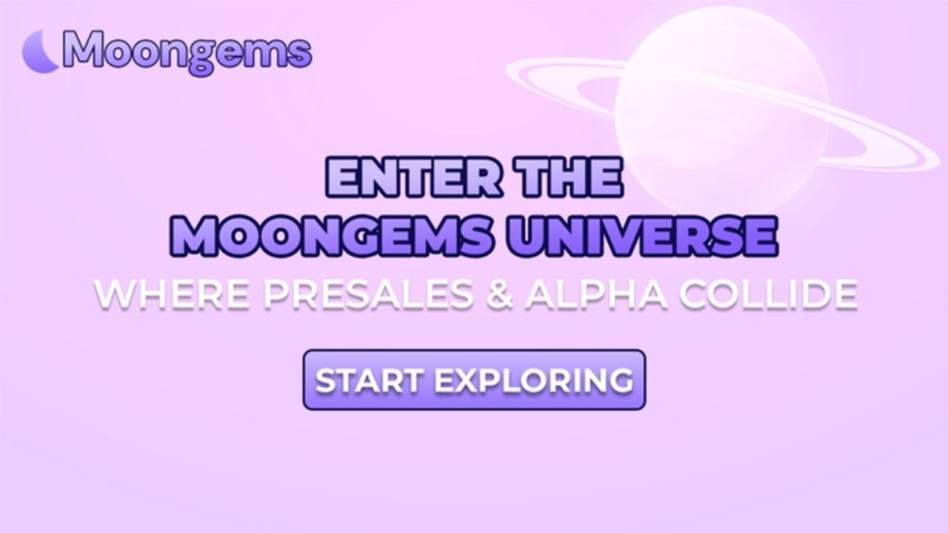Author: Jawad Hussain – Crypto Analyst & Web3 Researcher | 9+ years tracking presales, IDOs, and token launches. Follow him on X (formerly known as Twitter) and LinkedIn.
Crypto presales in 2025 are no longer confined to a single blockchain. The rise of cross-chain interoperability has transformed early-stage investing from a siloed experience into a vast, interconnected marketplace. Where once Ethereum, BNB Chain, Solana, and Avalanche operated in isolated spheres, investors can now seamlessly participate in presales across multiple networks — often from a single dashboard.
This Cross-Chain Presale Era is not just a technical evolution; it’s an economic and strategic revolution. By enabling tokens to launch with liquidity and community participation spread across multiple chains, projects are tapping into a much wider pool of investors. Liquidity fragmentation — once a serious barrier to adoption — is being replaced by liquidity aggregation, where funds and market activity converge across ecosystems, amplifying early price action and market depth.
Platforms like MoonGems have been quick to adapt to this reality. Their integrated multi-chain presale tracking tools allow investors to monitor allocations, tokenomics, and whale activity across different blockchains in real time. This eliminates the need to jump between dozens of DEX explorers, Telegram channels, and Discord servers. In the hyper-competitive presale landscape, speed is everything — and MoonGems delivers it by unifying data from Ethereum, Solana, BNB, Arbitrum, and beyond.
The strategic implications are massive:
- Greater investor reach means projects can scale faster from day one.
- Improved liquidity flow reduces slippage and increases trading confidence.
- Enhanced whale tracking across chains offers deeper insights into capital movement and sentiment shifts.
For retail investors, the shift is equally significant. Cross-chain access removes the technological and capital barriers that once limited presale participation. Whether a presale is hosted on an EVM-compatible chain or a completely different architecture, interoperability protocols and launchpads now make participation as simple as approving a wallet transaction.
This article will explore how interoperability is redefining presale mechanics, why liquidity and community now move across chains with unprecedented fluidity, and how MoonGems equips investors to navigate — and profit from — this new era. We’ll break down the underlying technology, showcase real-world case studies, and provide actionable strategies for both retail and institutional investors looking to master the multi-chain presale landscape.
In a crypto market that never sleeps, the chains are no longer walls — they’re bridges. And in 2025, those bridges are where the biggest opportunities lie.
The Rise of Cross-Chain Presales: Technology and Market Shifts
Until recently, presales were a walled-garden experience. A token would launch on a single blockchain, and if you weren’t already active in that ecosystem — with the right wallet, the right token standard, and the right native currency — you were locked out. This created an exclusivity barrier that limited participation, fragmented liquidity, and slowed down the momentum of even the most promising projects.
That barrier began to crumble with the advancement of cross-chain interoperability protocols such as LayerZero, Axelar, and Wormhole. These technologies allow assets, data, and even smart contracts to move seamlessly between blockchains without requiring users to manually bridge tokens or switch networks. For presales, this means that an investor on Ethereum can contribute to a token launching on Solana or BNB Chain without ever leaving their home ecosystem.
From a market perspective, the benefits are transformative:
- Wider investor participation → Projects can market their presales to multiple blockchain communities at once.
- Faster liquidity accumulation → Capital can flow from various chains simultaneously, accelerating token listings.
- Reduced gas and transaction friction → Many cross-chain presale platforms allow contributions from the chain with the lowest fees.
MoonGems and the Multi-Chain Advantage
MoonGems has quickly become a go-to platform for presale investors navigating this new landscape. Its multi-chain presale tracker consolidates upcoming and active presales across Ethereum, BNB Chain, Solana, Polygon, Avalanche, and newer L2s like Arbitrum and Base. The platform also layers in real-time whale tracking, giving investors insights into where major players are allocating their funds — even if those allocations are happening across different ecosystems.
For example, a whale may split a $2 million presale investment between Ethereum and BNB Chain allocations. Without MoonGems’ aggregated view, that move could look like two separate, smaller investments on each chain. With cross-chain visibility, the true scale of whale participation — and its potential impact on token price action becomes clear.
Early Case Studies of Cross-Chain Presale Success
One striking example is AptosPad, which launched its presale across Ethereum, Aptos, and Polygon simultaneously in early 2025. Within 48 hours, over 40% of contributions came from chains other than Aptos, proving the value of multi-chain outreach. Another case, SOL-EVM Connect, allowed Solana-native tokens to raise funds from EVM-compatible wallets, capturing liquidity that would have otherwise been inaccessible.
Both of these projects saw higher initial liquidity pools, more trading pairs at launch, and reduced price slippage compared to single-chain launches.
Why This Matters for Investors
For retail and institutional players alike, cross-chain presales open up an entirely new layer of opportunity:
- Diversified access — You’re no longer limited to the chain you hold assets on.
- Faster market entry — No need to bridge assets manually; smart contracts handle it.
- Whale transparency — Platforms like MoonGems reveal true multi-chain capital flows.
In short, the Cross-Chain Presale Era has collapsed the geographical equivalent of crypto — the borders between chains. Instead of isolated nations, the presale market now operates like a global economy, with capital moving freely and quickly to where it’s most likely to generate returns.
The next section will explore how interoperability technology actually works under the hood and why understanding its mechanics is crucial for anyone looking to capitalize on this trend.
The Technology Behind Interoperability: How Bridges and Protocols Make Multi-Chain Presales Possible
The Cross-Chain Presale Era would be impossible without the breakthroughs in interoperability infrastructure over the last three years. While the concept of moving assets between blockchains is not new, early solutions were slow, manual, and prone to security breaches. In 2025, the tools have matured to the point where investors can contribute to presales across multiple blockchains in a single transaction — a radical leap from the fragmented processes of the past.
Core Components of Cross-Chain Presales
- Interoperability Protocols
Platforms like LayerZero, Axelar, and Wormhole form the backbone of multi-chain connectivity. They act as communication layers between blockchains, allowing data packets — including token balances, transaction details, and smart contract triggers — to pass securely between networks. For presales, this means that an Ethereum-based investor can purchase tokens from a Solana-native presale without touching a bridge manually. - Cross-Chain Bridges
Although full interoperability protocols reduce the need for manual bridging, bridges still play a role. Modern bridges such as Synapse and Stargate now offer faster transactions, lower fees, and improved security measures. The integration of multi-signature validation and zero-knowledge proofs has drastically reduced the risk of exploits. - Unified Wallets
Multi-chain wallets like Rabby, MetaMask Snaps, and Phantom Cross-Chain now allow users to hold and interact with assets from different chains in one interface. For presales, this means investors can switch between blockchains in seconds, reducing friction and boosting participation rates. - Smart Contract Interoperability
Perhaps the most game-changing development is cross-chain smart contracts. These contracts can be deployed across multiple networks and interact with each other seamlessly. For example, a presale smart contract on Ethereum can trigger the creation of equivalent token allocations on Polygon or Avalanche in real time.
MoonGems’ Role in Demystifying the Technology
For many investors, the complexity of cross-chain systems can be intimidating. This is where MoonGems adds exceptional value. Its Presale Interoperability Dashboard breaks down:
- Which interoperability protocol a presale is using
- The supported chains and their corresponding allocation pools
- Real-time transaction data showing where funds are flowing
This transparency helps investors assess technical reliability before committing capital. If a presale uses a low-trust or poorly audited bridge, MoonGems will flag it — a safeguard that’s becoming increasingly important as cross-chain participation scales.
Security Considerations for Cross-Chain Presales
While the technology has advanced, risks still exist. Bridge hacks in 2022 and 2023 resulted in losses exceeding $2 billion, according to Chainalysis reports. The lesson? Even in 2025, investors must verify that a presale’s interoperability tools have undergone audits by reputable firms like CertiK, PeckShield, or Trail of Bits. MoonGems incorporates these audit details into each presale listing, so users can filter for “Audit Verified” projects before participating.
Another important security upgrade is the shift toward trust-minimized bridges — systems that reduce the number of validators required for transaction approval, lowering the attack surface. For investors, understanding these upgrades is key to minimizing exposure in a whale-driven market where presale capital can surge into a project in minutes.
Why Understanding the Tech Matters
Interoperability isn’t just a buzzword — it’s the infrastructure that enables today’s global presale liquidity network. Investors who understand how protocols, bridges, and smart contracts interact can:
- Identify presales with the most secure and efficient multi-chain setups
- Anticipate transaction bottlenecks or fee spikes before they happen
- Leverage MoonGems’ interoperability filters to find projects with the highest potential reach
In the next section, we’ll shift from technology to market opportunity, exploring how interoperability not only increases investor access but also fundamentally expands the liquidity, community reach, and valuation potential of presale projects.
Expanding Investor Reach: How Interoperability Increases Access and Liquidity in Presales
One of the most transformative impacts of cross-chain interoperability is its ability to break down the geographical, technical, and capital barriers that once limited presale participation. In previous years, an investor might have skipped a promising presale simply because it was hosted on an unfamiliar chain. In 2025, interoperability ensures that the “wrong chain” is no longer an obstacle — opening the door to truly global presale liquidity.
From Localized to Global Participation
Historically, presales were fragmented by network loyalty and technical hurdles:
- Ethereum-based investors tended to stick to ETH projects.
- BNB Chain users rarely crossed into Solana’s ecosystem.
- Smaller chains like Fantom or Harmony struggled to attract outside investors.
Now, cross-chain compatibility allows capital to flow freely between ecosystems. A presale on Solana can receive contributions from Ethereum whales, Arbitrum retail traders, and Polygon gaming communities — all without requiring those participants to bridge funds manually.
Platforms like MoonGems amplify this effect by listing presales from every major EVM and non-EVM chain in a single feed. Investors can sort by interoperability score, a proprietary MoonGems metric that evaluates:
- Number of connected chains
- Cross-chain transaction speed
- Liquidity depth across networks
This allows early-stage projects to tap into a much wider investor base from day one.
Liquidity Aggregation and Price Stability
One of the biggest advantages of cross-chain presales is liquidity aggregation. Instead of liquidity being split across multiple DEXs and chains, interoperability protocols route it into unified pools. This has two major effects:
- Reduced Slippage: Traders experience smaller price swings when buying or selling large amounts of tokens.
- Higher Market Confidence: A deeper pool signals stability, encouraging more participation both during and after the presale.
MoonGems’ Liquidity Tracker now supports multi-chain analysis, showing where liquidity is concentrated and whether a project is using aggregator DEXs like SushiXSwap or Li.Fi to unify its pools.
MoonGems as a Cross-Chain Intelligence Hub: Tools, Analytics, and Investor Advantages
In the cross-chain presale era, information speed and accuracy define who wins and who misses out. While interoperability enables projects to attract a global investor base, it also creates a more complex data environment. Presales now span multiple chains, multiple liquidity pools, and multiple community hubs. For the average investor, keeping track of it all can be overwhelming. That’s where MoonGems steps in — transforming scattered on-chain data into a unified intelligence system that empowers both retail traders and whales.
Unified Multi-Chain Presale Dashboard
At the heart of MoonGems’ cross-chain advantage is its Unified Multi-Chain Dashboard. Instead of forcing users to jump between Etherscan, Solscan, BscScan, and Arbiscan, MoonGems consolidates data feeds from EVM and non-EVM chains into a single interface.
This dashboard doesn’t just list presales — it contextualizes them with:
- Interoperability Scores: A MoonGems-exclusive metric evaluating cross-chain connectivity, transaction efficiency, and liquidity integration.
- Multi-Chain Tokenomics: Detailed supply breakdowns showing where tokens are allocated and vested across chains.
- Liquidity Flow Maps: Visual diagrams revealing how capital is distributed among connected blockchains.
For an investor, this means instant clarity on where a project’s strengths — and vulnerabilities — lie.
Real-Time Whale Tracking Across Chains
In single-chain presales, tracking whales was relatively straightforward. But in 2025’s multi-chain ecosystem, whale wallets can deploy capital simultaneously across several blockchains. MoonGems solves this by linking wallet identities through AI-powered address matching, creating a unified profile of whale behavior.
This system allows users to:
- See aggregate whale holdings across chains for a single project.
- Track cross-chain accumulation patterns in real time.
- Receive alerts when a whale begins distributing tokens across different networks — often a sign of upcoming market moves.
This intelligence is particularly valuable during the first hours after a presale launch, when liquidity movements can make or break short-term ROI.
Sentiment & Social Signal Integration
MoonGems isn’t just an on-chain data aggregator — it’s also a social intelligence platform. It scans Twitter, Telegram, Discord, and Reddit for cross-chain presale chatter, then uses natural language processing (NLP) to generate sentiment scores.
What makes this especially powerful in a cross-chain context is the ability to compare sentiment chain by chain. For example, a project might be receiving strong hype in Ethereum communities but lukewarm reception on Solana — a disparity that could influence liquidity flow and early trading behavior.
Investor Advantages of Using MoonGems in Cross-Chain Presales
- Speed of Execution – In cross-chain presales, being early isn’t enough; you need to act at the exact right moment. MoonGems’ real-time feeds cut decision time from hours to seconds.
- Risk Reduction – By highlighting liquidity bottlenecks or token concentration risks across chains, MoonGems helps investors avoid capital traps.
- Alpha Discovery – Many cross-chain projects trend on one blockchain before going viral across others. MoonGems identifies these early signals.
- Portfolio Diversification – The platform’s cross-chain filters help investors balance exposure between ecosystems, reducing reliance on any single network.
In a world where presales can now span Ethereum, BNB Chain, Solana, Avalanche, and emerging L2s all at once, MoonGems has positioned itself as the control tower for the cross-chain presale era.
Strategies for Investors in a Multi-Chain Presale Market
The shift to cross-chain presales in 2025 has opened vast new opportunities — but it has also introduced new risks and complexities. Success in this environment isn’t just about spotting a promising project; it’s about navigating multiple blockchains simultaneously with precision, speed, and risk awareness. Here’s a detailed playbook for mastering this landscape, using MoonGems as the backbone for informed decision-making.
1. Start with Cross-Chain Feasibility Checks
Before committing capital to a presale, investors must evaluate the project's interoperability readiness.
- Check Supported Bridges: If a token launches on multiple chains, confirm that secure, audited bridges are in place for moving assets between them.
- Review Tokenomics Across Chains: A project with strong tokenomics on Ethereum but weak liquidity or unfavorable vesting schedules on Solana could face price imbalance and arbitrage issues.
- MoonGems Edge: The platform’s Interoperability Score offers a quick, data-backed way to assess technical readiness and liquidity distribution.
A presale with well-structured cross-chain architecture tends to draw higher investor confidence and faster liquidity growth post-launch.
2. Use Cross-Chain Whale Tracking to Time Entries
In cross-chain presales, whales often test liquidity and sentiment on one chain before scaling into others. By watching these patterns, investors can time entries more effectively.
- Example: If whales start accumulating heavily on BNB Chain but only lightly on Ethereum, it could signal a price lead for BNB-based tokens before other chains catch up.
- MoonGems Edge: Real-time, AI-linked whale wallet profiles let you see aggregate capital deployment across chains, revealing hidden momentum.
Strategic entries based on whale movement convergence can improve both short-term flips and long-term positioning.
3. Diversify Allocation Across Ecosystems
Interoperability allows investors to spread their presale allocation across multiple blockchains without losing exposure to a single project.
- Why it Works: If one chain experiences congestion, high gas fees, or liquidity issues, positions on other chains can act as a hedge.
- Execution Tip: Use smaller initial positions on each chain, then scale up where liquidity and sentiment grow fastest.
- MoonGems Edge: Filters for ecosystem-specific presales allow targeted diversification while keeping your portfolio balanced.
4. Monitor Sentiment Disparities for Arbitrage Plays
A major advantage of cross-chain presales is the price and sentiment variation between chains in the early trading period.
- Example: A token might trade at $0.12 on Avalanche and $0.15 on Ethereum due to slower liquidity movement.
- Play: Bridge tokens from the cheaper chain to the more expensive one to capture spread profits.
- MoonGems Edge: Chain-by-chain sentiment analysis can predict which network will see price surges first.
5. Plan for Coordinated Exit Strategies
Exiting a cross-chain position is more complex than a single-chain sell-off.
- Key Considerations: Gas fees, bridge delays, and liquidity depth vary widely across networks.
- Approach: Stagger exits across chains to avoid slippage while monitoring whale distribution patterns to anticipate sell pressure.
- MoonGems Edge: Alerts for whale selling activity let you get ahead of sharp liquidity drains.
In the multi-chain presale market, speed, intelligence, and adaptability are non-negotiable. MoonGems isn’t just a tracker; it’s a command center that connects the dots between on-chain liquidity, whale behavior, and market sentiment across ecosystems. Investors who embrace these strategies stand to turn the complexity of interoperability into a powerful competitive advantage.
Conclusion: Mastering the Cross-Chain Frontier
The Cross-Chain Presale Era represents one of the most profound shifts in the history of early-stage crypto investing. Where once presales were gated by single-chain ecosystems, the rise of interoperability has broken down those walls, enabling projects to tap into global liquidity and investors to access opportunities that were previously fragmented.
This evolution is not merely about technology — it’s about market efficiency and inclusivity. Investors are no longer constrained by the technical limitations of a single blockchain; they can now engage in a presale on Ethereum in the morning, monitor whale moves on Solana by the afternoon, and bridge assets to BNB Chain in the evening — all while staying within a unified, data-rich ecosystem like MoonGems.
For projects, this shift is a game-changer. Cross-chain presales allow them to scale community engagement, accelerate liquidity formation, and strengthen price stability from the very first day of trading. The ability to tap into diverse ecosystems also protects against over-reliance on a single chain’s market conditions, ensuring a more resilient launch.
Yet, with these opportunities come new challenges. Cross-chain trading requires heightened awareness of liquidity depth, bridge security, tokenomics consistency, and whale activity across multiple ecosystems. A poorly managed cross-chain strategy can fragment liquidity, create arbitrage vulnerabilities, and leave investors exposed to unnecessary risks.
This is where MoonGems becomes indispensable. By providing real-time whale tracking, chain-specific sentiment analysis, interoperability scoring, and liquidity monitoring, it transforms a potentially overwhelming environment into a clear, actionable battlefield map. With MoonGems’ tools, investors are empowered to make informed, timely decisions — whether they’re chasing early gains, arbitraging cross-chain price spreads, or building a diversified, multi-chain portfolio for the long term.
In 2025, the winners in presale investing won’t just be those who find the next 100x token; they’ll be the ones who master the multi-chain terrain before everyone else. The bridges are built, the doors are open, and the flow of capital across blockchains is only accelerating. Those who understand and adapt to this reality — armed with the right insights, platforms, and risk controls — will be positioned not just to survive, but to thrive.
In the end, interoperability isn’t simply a feature of the future; it is the new foundation of crypto presales. And for investors ready to play on this expanded stage, the game has never been more exciting — or more rewarding.
Frequently Asked Questions (FAQs)
- What is a cross-chain presale?
A cross-chain presale allows investors to purchase tokens across multiple blockchain networks, increasing accessibility and liquidity. - Why is interoperability important for presales?
Interoperability expands the investor pool, prevents liquidity fragmentation, and allows projects to launch in multiple ecosystems simultaneously. - How does MoonGems help in cross-chain investing?
MoonGems provides interoperability scores, whale tracking across multiple chains, sentiment analysis, and liquidity monitoring to guide investment decisions. - Are cross-chain presales riskier than single-chain presales?
They can be, due to bridge vulnerabilities, liquidity fragmentation, and arbitrage risks. However, tools like MoonGems help mitigate these risks with real-time data. - Can cross-chain presales offer better ROI?
Yes. Broader investor reach, multi-ecosystem exposure, and arbitrage opportunities can lead to stronger and faster price growth post-launch.
Glossary of Key Terms
Cross-Chain Presale: A token sale conducted across multiple blockchain networks.
Interoperability: The ability for different blockchain networks to interact and exchange value seamlessly.
Bridge: A protocol that enables asset transfer between blockchains.
Liquidity Fragmentation: When token liquidity is split across multiple chains, potentially impacting price stability.
Arbitrage: Profiting from price differences of the same asset across different markets or chains.
Interoperability Score: A MoonGems metric assessing the readiness and efficiency of a project’s cross-chain infrastructure.
Article Summary
The Cross-Chain Presale Era is redefining crypto investing in 2025. With interoperability, projects can tap into multiple blockchains at once, drawing liquidity from a global investor base. This unlocks opportunities for both projects and investors — from deeper liquidity pools to faster community growth and even cross-chain arbitrage plays. However, it also introduces risks like liquidity fragmentation, bridge vulnerabilities, and inconsistent tokenomics.
Platforms like MoonGems are critical for navigating this complexity, offering interoperability scoring, cross-chain whale tracking, sentiment analysis, and liquidity insights. For savvy investors, mastering cross-chain presales means leveraging these tools to maximize returns while minimizing exposure. In an increasingly interconnected crypto world, the ability to move capital — and insight — across chains will be the defining skill of the next generation of presale winners.
Disclaimer
This article is for educational purposes only and does not constitute financial advice. Cryptocurrency investments carry inherent risks, including market volatility, security vulnerabilities, and potential loss of capital. Readers should conduct their own research and, if necessary, consult a licensed financial advisor before making investment decisions. MoonGems and any tools mentioned are provided as informational resources, and no endorsement of specific projects or tokens is implied.



